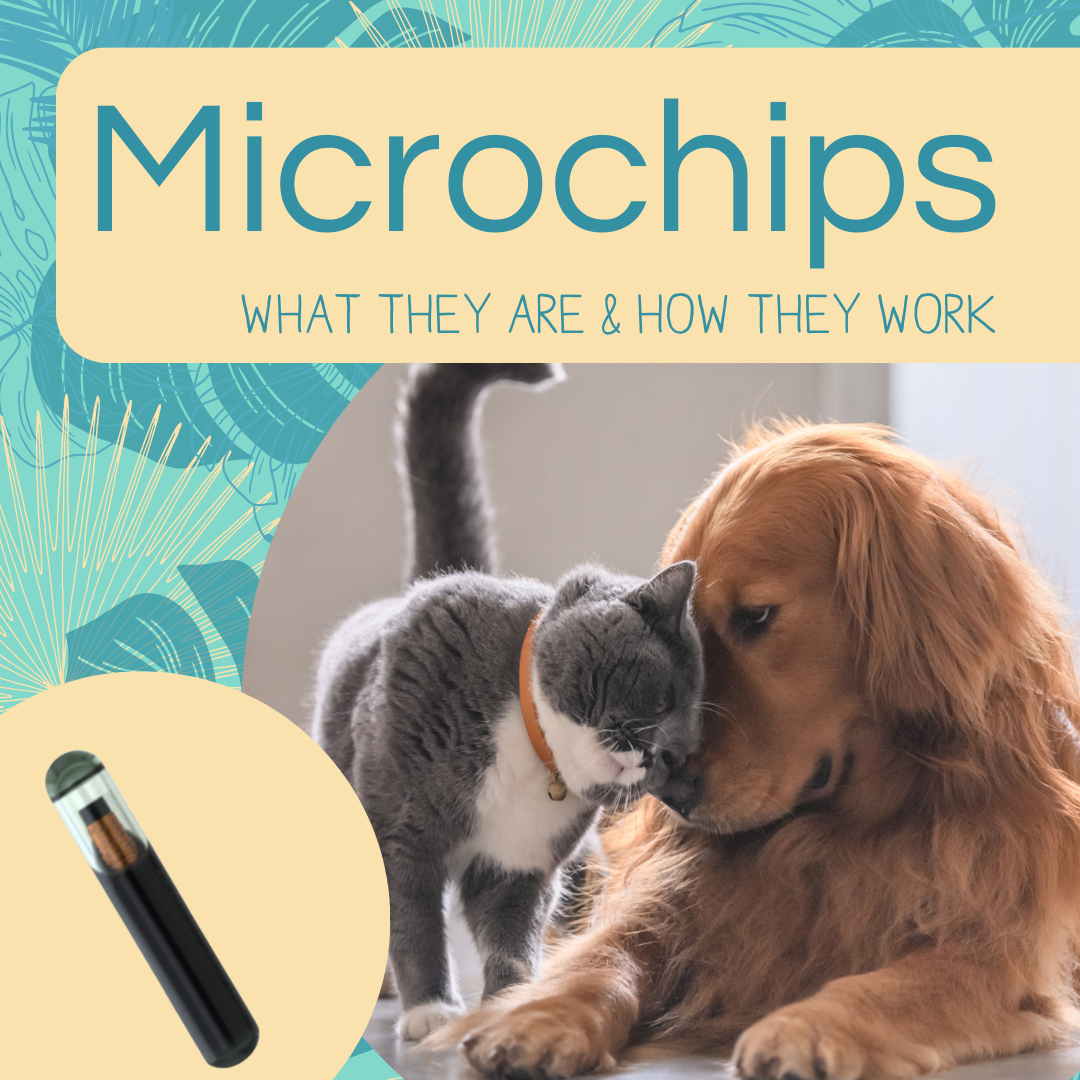
Microchipping our dogs and cats has become common practice these days. In fact, our state of Hawaii requires pet microchips by law! Even so, it’s not uncommon for many of us to have a foggy understanding of how these little devices work.
What is a Microchip?
A microchip is an electronic device which is about the size of a grain of rice. It is typically placed under the skin of a dog or cat, between the shoulder blades. The microchip stores a unique, 15-digit number, which can be read by a microchip reader via radio frequency. It functions as a way to identify your dog or cat as an individual, and belonging to you.
How Do Pet Microchips Work?
There are many microchip companies which veterinary clinics or shelters may use such as AVID, HomeAgain, 24PetWatch, AKC. When a dog or cat has been microchipped, the number on the chip is entered into the manufacturer’s database, along with the animal’s name, age, breed, and their family’s contact information. Most animal care establishments will do this part for you. However, is it highly critical that you remember to keep information updated, particularly phone numbers and email addresses.
Not a GPS!
It’s a common misconception that pet microchips function like a GPS tracker or Airtag. This unfortunately is NOT the case! The chip stores an ID number only, which is connected to contact information in the manufacturer’s database.
Lost & Found Animals – How Can Pet Microchips Help?
If your dog escaped through the gate, or your cat climbed out the window, pet microchips are the most efficient way to identify who the animal is, who they belong to, and how to get in contact with their family.
When a good citizen comes across your dog or cat, they may bring them to a veterinary clinic to scan for a microchip. If “Bella” or “Max” are chipped, the clinic will use the number to contact the manufacturer for your family’s contact information on file. Some families may opt for a “privacy hold.”, which means only the veterinary clinic may reach out to the family, and cannot release their information to the finder. Once you’ve been contacted, you may connect with the finder to be reunited with your animal family member.
If your dog or cat has no microchip, the most efficient way to be reunited with them may be to contact the Hawaii Humane Society. Scouring social media platforms is also useful. Although this is often successful in our Kailua community, the risk of relying on these options could be that you are never reunited with your animal family member. Keeping a collar around your dog or cat’s neck with an identification tag can be helpful, but these can fall off or be removed. A microchip is the most direct way to tie our dog or cat back to YOU.
How Do I Check if my Dog or Cat’s microchip is Registered in a Database?
If you know your animal family member’s microchip number, the first step is to identify the manufacturer. This may be on paperwork you received at the time of microchipping. Or, you can Google search the first three digits of the number and the phrase “microchip company.” (Ex: 985 microchip company). Once you have identified which company made the microchip, call the company to ask if it is registered to you. If not, they can help you do so.
How do I get my Cat or Dog Microchipped?
Pilina Vet is happy to microchip your dog or cat any time! Our clinic uses HomeAgain microchips, and we always register your animal family member’s microchip for you. Once chipped, we send you home with a microchip certificate which notes your animal family member’s microchip and the manufacturer, HomeAgain.